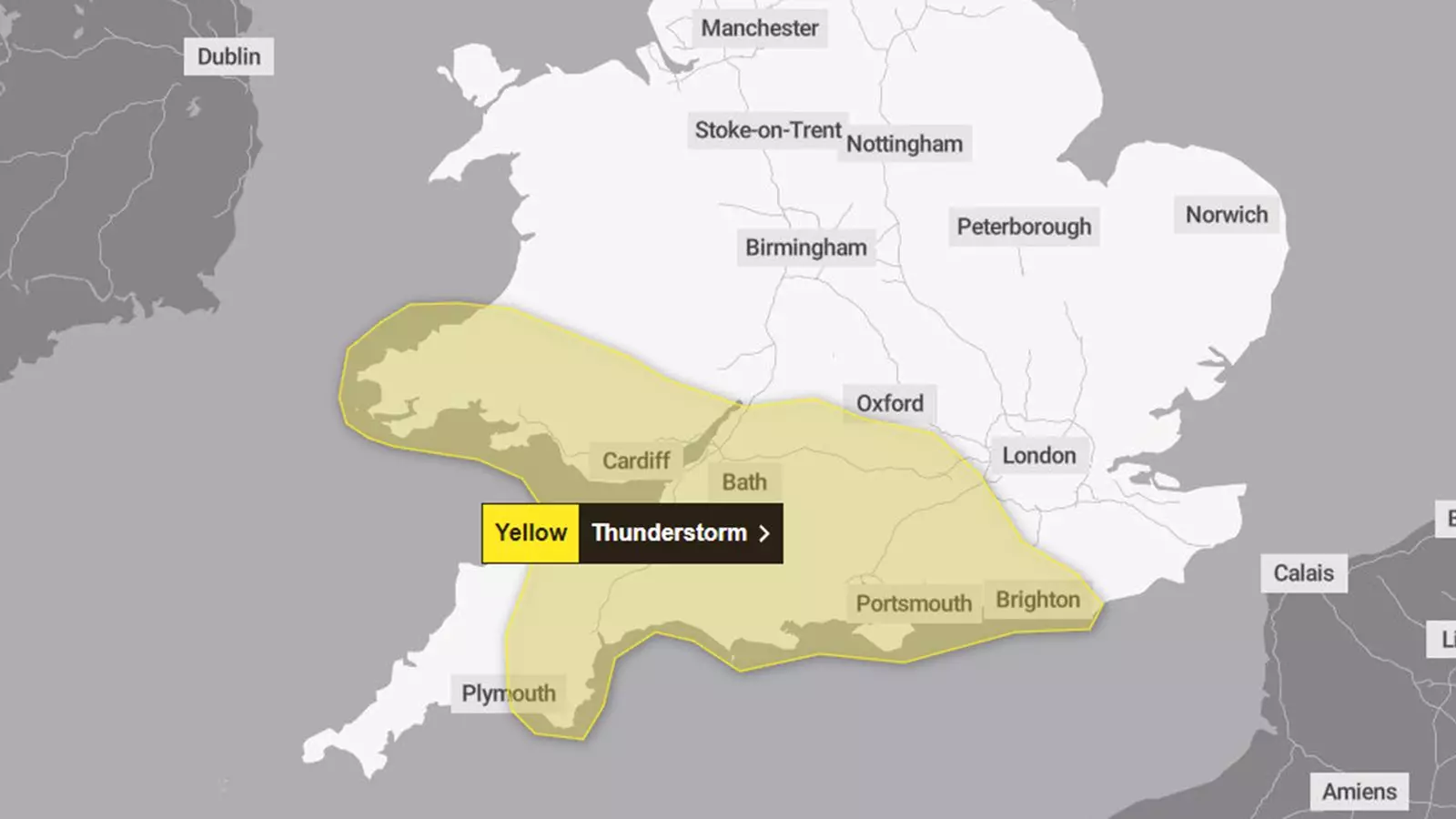In a concerning forecast, the Met Office has issued a yellow weather warning that spans significant portions of South Wales, South West England, and southern England. This warning is effective from 4 p.m. to midnight today, highlighting the potential for severe thunderstorms and heavy rainfall that could lead to substantial challenges for residents and travelers. The forecast suggests that within a short duration of just two to three hours, some regions could receive up to 40mm of rain. This alarming prediction raises the question of how prepared various sectors, from local governments to emergency services, are for such weather events.
The implications of the forecast are vast and multifaceted. The Met Office has indicated that the downpour could disrupt travel significantly, impacting both road and rail networks. Drivers may face dangerous conditions due to spray, standing water, and potential hail. Notably, such weather can instigate a domino effect: delays in transportation can lead to missed connections and inconvenience for thousands of commuters and travelers. Train services, in particular, may experience interruptions, which heightens the likelihood of chaos at transport hubs.
Furthermore, the possibility of flooding poses a direct threat to homes and businesses, emphasizing the need for individuals and communities to be vigilant. The Met Office cautioned about “short-term loss of power,” hinting at the potential strain on local infrastructure during these tumultuous weather events. Residents are urged to take preventive actions, such as clearing drainage systems and securing outdoor furniture, to mitigate the risk of flooding.
As attention shifts to the following days, the weather patterns suggest that the threat is not confined to just today. Forecasters predict ongoing heavy showers and thunderstorms that could impact central and southern regions of the UK into the following day. This may suggest that the weather is part of a larger system that is still evolving, underscoring the critical role of weather monitoring as conditions continue to develop.
Interestingly, the Met Office has also noted its “increasing confidence” regarding ex-Hurricane Kirk. Originally seen as a potential threat to the UK, it appears that its path will lead it south toward northern France. While the immediate risk to the UK has diminished, the continuing watch on former hurricanes illustrates the dynamic nature of weather forecasting as meteorologists work to predict the outcomes of unpredictable systems.
This forecast follows a series of unsettling weather events that have characterized early autumn in the UK. The recent rains have already caused isolated flooding, particularly noted in regions like Norfolk. It is a reminder that extreme weather impacts are not singular events but part of a broader context of climate shifts that are becoming increasingly unpredictable.
Climate change undeniably factors into these patterns, as rising temperatures globally lead to more frequent and intense weather events. Understanding the interactions between various climatic phenomena will be essential in navigating future weather disruptions. The patterns observed are not only indicators of immediate disturbances; they serve as a critical bellwether for the expected evolution of weather as climate variability continues.
As this weather warning unfolds, raising public awareness becomes imperative. The Met Office plays a crucial role in disseminating timely and accurate information, but local communities must also engage in readiness initiatives. Simple measures like public service announcements and educational campaigns about storm preparedness can significantly decrease the impacts of severe weather.
The yellow weather warning serves as a stark reminder of the challenges posed by severe weather. While immediate actions can help mitigate risks, a comprehensive understanding of weather patterns and climate change is necessary for long-term preparedness. With the weather forecast indicating a possibility of persistent disturbances, the communities must remain vigilant and proactive to navigate the stormy days ahead effectively.


Leave a Reply